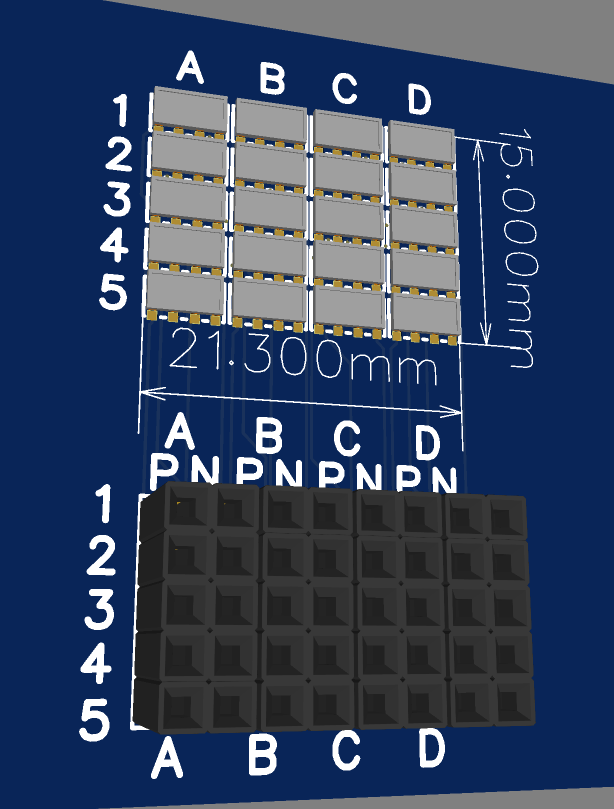While waiting on certain components to get manufactured and arrive, I also started work on a branch of the design for later. This is the beginning of a development board for light energy harvester. I would collect any light and run through a harvester IC, then use this for a battery charger and watch power management. I would like to very carefully avoid using the word "solar" as this is not a solar charger, but any light, including artificial indoor lightning. BQ25570 seems like a good candidate.
The photo elements generate 33uA (0.000033 A) current from a 1mW/cm2 light energy. I have currently 20 high-efficiency photo-diodes on a 15 x 20mm area on the board, and planning to add another 4, for as total of 24 in the final design. In other words, in average lightning condition the harvester will generate 0.6mA for each 1 mW/cm2. Putting things in perspective, the intensity of bright mid-day sunlight on the equator is about 130 mW/cm2, or over 100 times more powerful, and this will generate an astonishing 85mA current, enough to charge a 100mAh watch battery in a about one hour. That 100mAh battery could power the smartwatch for one year, so this is a complete game changer.
Once fully developed, the watch will be powered by once-a-year exposing it to bright sunlight for a few hours. Or alternatively just wearing it daily on your wrist while the watch sucks in ambient light. The cornell-dubilier batteries have a capacity of 500mAh, and could power the watch for 5 years under normal usage to full depletion.
Without going through a full literature review of the lithium-nickel-manganese-cobalt-oxide battery chemistry and manufacturing, I will only say that this is hypothetical. In reality we could rely on at most 300mAh capacity, as discharging to "zero" would significantly degrade the battery performance, hence we aim for charging the watch about once a year, yet, having the option of discharging to zero and powering it for 5 years is a good performance hedge.
The real challenge here is designing the entire end-to-end powerplant for the smartwatch. As such, due to lack of data, we will have to derive most parameters experimentally and combine with literature sources to build a proper r3eal-world model of the powerplant. In the current incarnation, this is solved ingenuously by using a very specific primary battery and a bag of dirty hardware/software tricks I employed, which is still very workable in the broad picture of powering the watch for 10 years. However, adding a light harvesting powerplant would bump up the power we can use on a daily basis and allow us to judiciously add certain options I intentionally avoided, such as color screen, lighting, and some more power-hungry features normally found in very high end smartwatches.
In any event, this is the beginning of the light harvesting effort which will be added at a later point in time.
Picture attached of the schematics, make whatever you want out of it.
Cheers!

 VALENTINE
VALENTINE
Discussions
Become a Hackaday.io Member
Create an account to leave a comment. Already have an account? Log In.